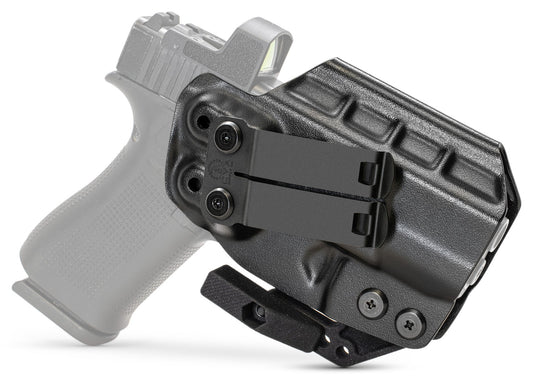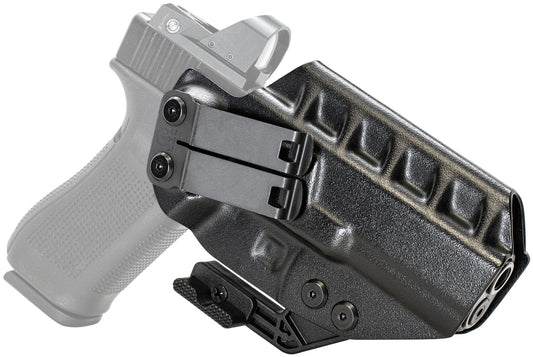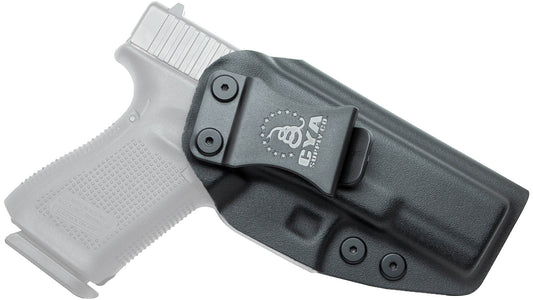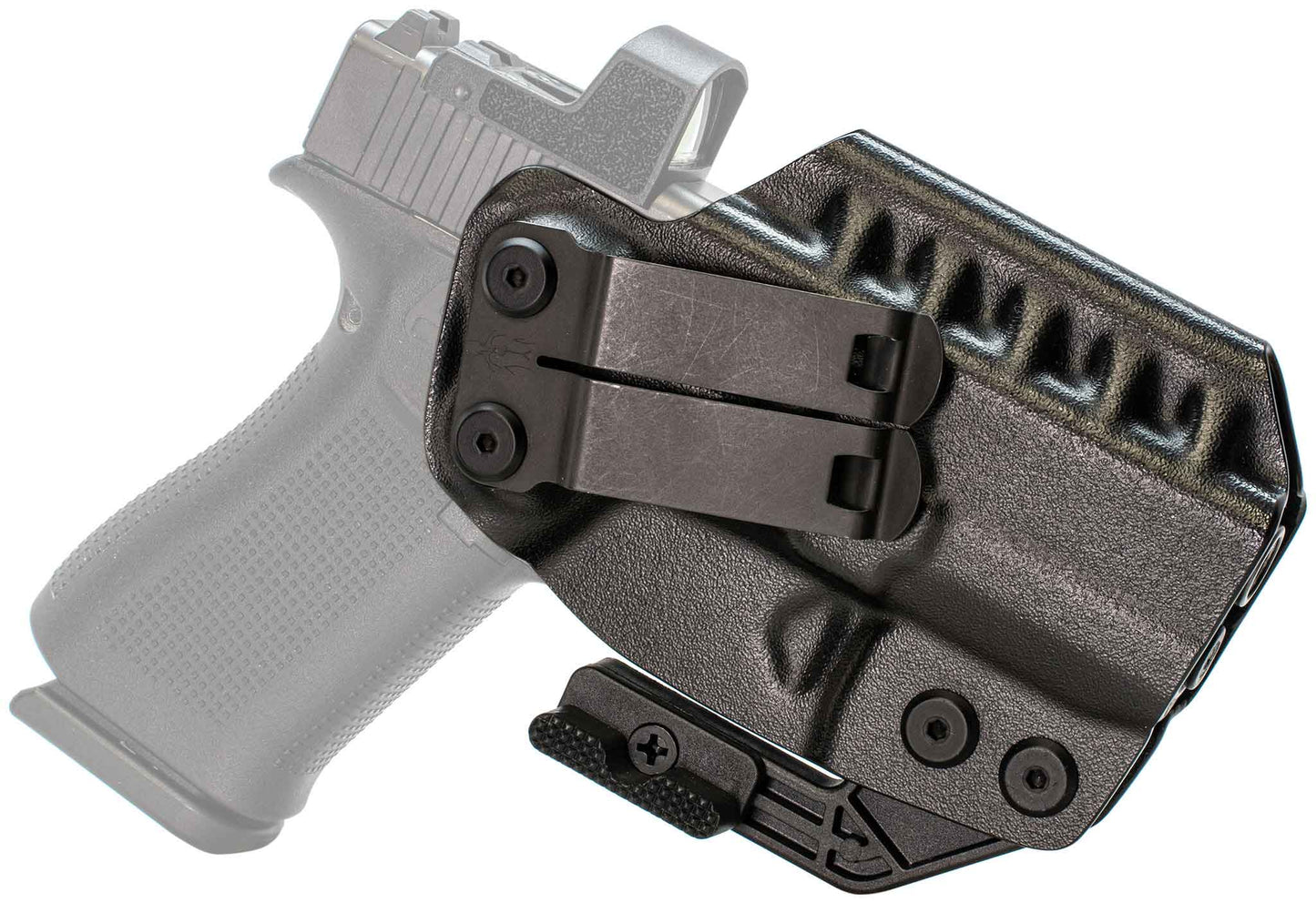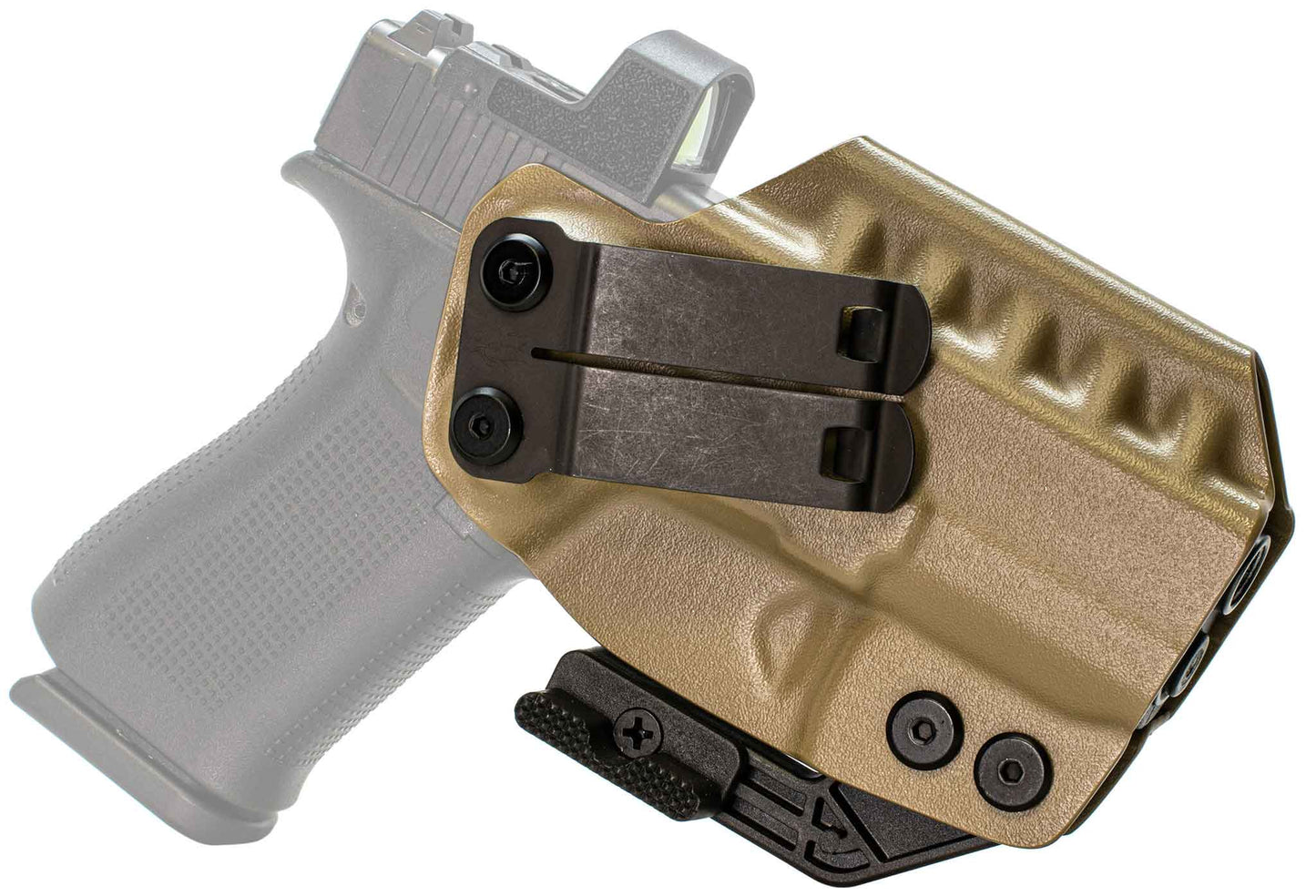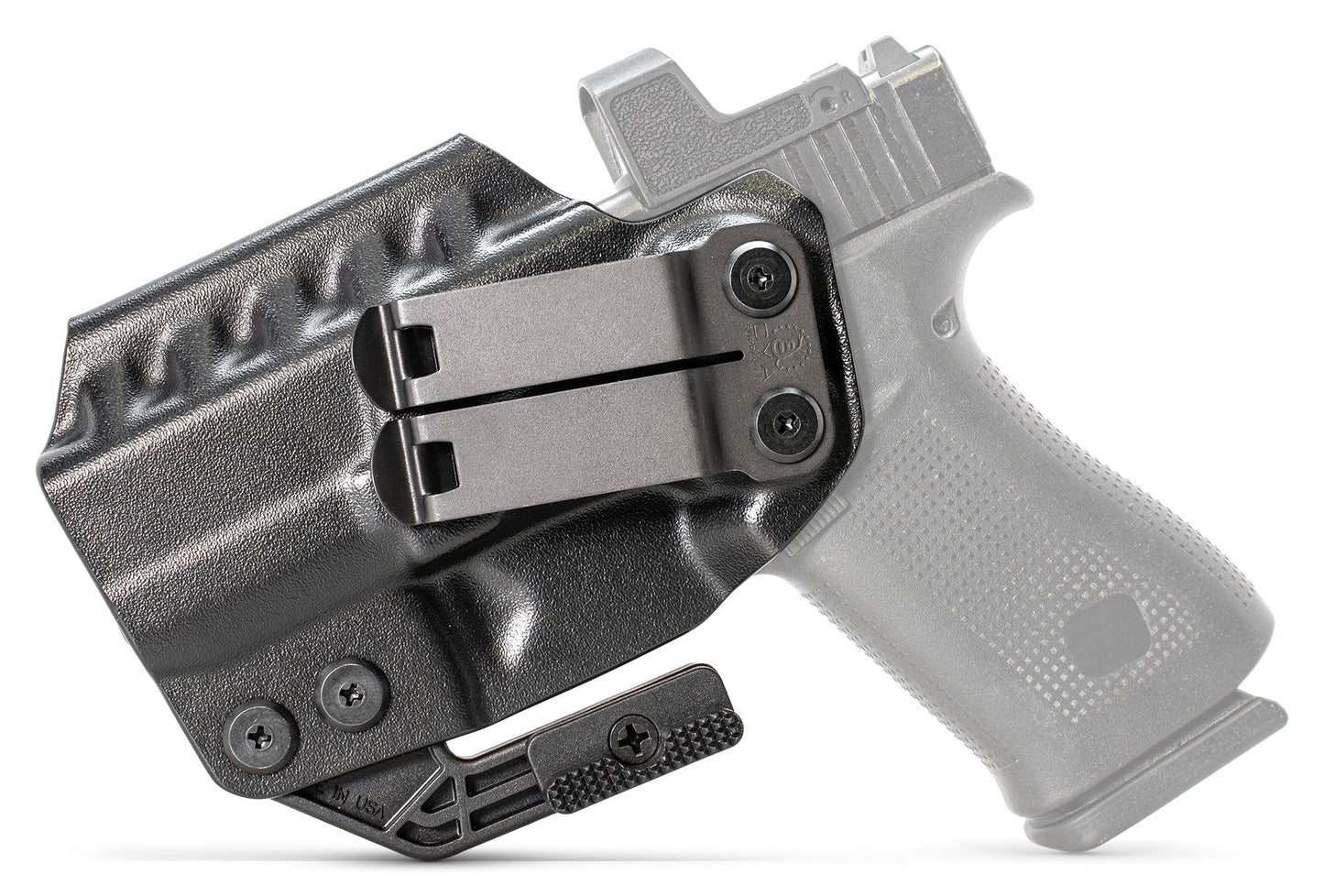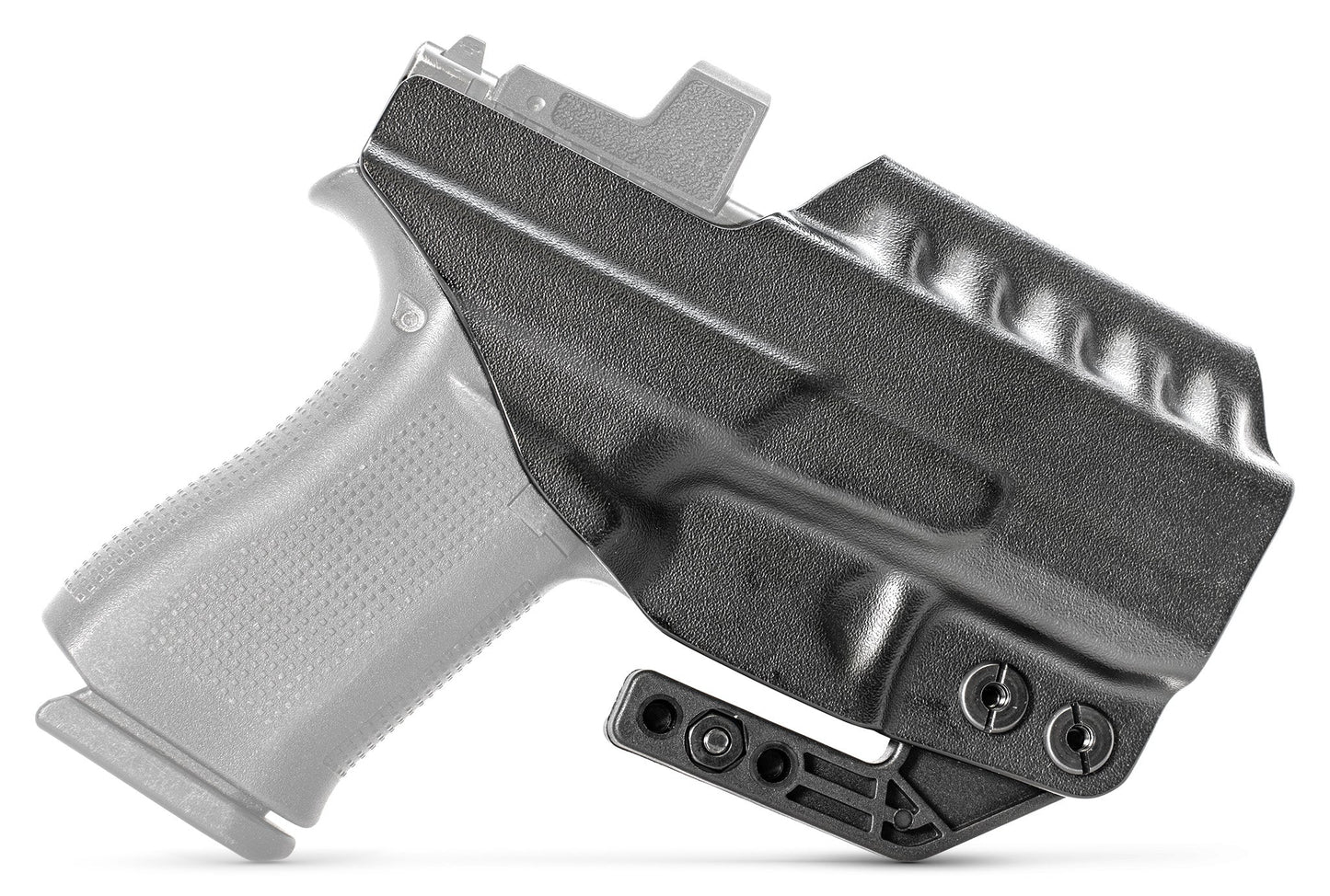Difference Between Glock Generations: Understanding the Evolution
Glock pistols, renowned for their reliability and ease of use, have evolved significantly since their introduction by the Austrian company Glock Ges.m.b.H. in the early 1980s. Designed by founder Gaston Glock, these pistols are popular among law enforcement and civilian shooters worldwide. With each new generation, Glock has made a series of enhancements and innovations catering to users' advancing needs. This evolution has seen alterations in design, ergonomics, and functionality.
Understanding the differences between Glock generations is crucial for enthusiasts and potential buyers, as each generation presents unique characteristics and improvements. The first generation introduced the revolutionary polymer-framed design, which set Glock apart in the firearms market. Subsequent generations built upon this foundation with features such as accessory rails, finger grooves, reversible magazine catches, and modular backstraps, enhancing versatility and performance. The continual refinement across generations has solidified the Glock's position as a leading pistol choice for various applications.
Key Takeaways
- Glock pistols have advanced through generations of design, starting with the original polymer-framed concept.
- Each generation has introduced meaningful enhancements in ergonomics, controls, and customizability.
- Glock's iterative updates reflect the brand's commitment to innovation and practical improvements.
Evolution of Glock Generations
Glock pistols have evolved significantly since their initial introduction by the Austrian company. With five generations to its name, Glock has continuously improved the design and functionality of its pistols to meet the changing needs of the Austrian military and civilian markets globally.
The First Generation: Glock Gen 1
Developed in the early 1980s for the Austrian military, the first-generation Glock, often called Glock 17, introduced a polymer frame that set it apart. The Gen 1 featured a non-slip, stippled surface but lacked an accessory rail or finger grooves, contributing to its simplistic design.
The Second Generation: Glock Gen 2
Introduced in the late 1980s, the Gen 2 Glocks incorporated slight ergonomic improvements such as a stippled front strap, back strap, and trigger guard. While maintaining the essence of the Glock 17, Gen 2 models were recognized by adding an upgraded locking block and enlarging the receiver.
The Revolutionizing Glock Gen 3
Marking a significant upgrade, the third generation emerged in the late 1990s with the addition of an accessory rail called the Universal Glock rail. This generation also introduced thumb rests, finger grooves, and an enlarged, reversible magazine catch that catered to a broader range of shooters and customization capabilities.
Further Enhancements in Glock Gen 4
The Gen 4, unveiled in 2010, is characterized by a dual recoil spring assembly, which aims to reduce felt recoil and extend the system's life. Additionally, Gen 4 models offer interchangeable backstrap panels to cater to various hand sizes and a more aggressive texture on the grip for enhanced control.
The Pinnacle: Glock Gen 5
The fifth generation, introduced in 2017, represents the current pinnacle in the lineage. Glock Gen 5 pistols have removed the finger grooves for a more universally comfortable grip and incorporate an ambidextrous slide-stop lever. These pistols boast improved barrel rifling for increased accuracy and a flared mag-well, making magazine changes swifter and more efficient.
Key Developments Across Generations
Glock pistols have undergone significant refinements through each generation, with notable improvements in frame design, barrel technology, and slide mechanics. These advancements are a testament to Glock's commitment to innovation and response to user feedback across various fields.
Frame and Grip Innovations
Ergonomic enhancements and customization options have marked the evolution of the Glock polymer frame. Gen 1 Glocks introduced the basic grip design, which laid the foundation for future developments. Gen 3 models featured finger grooves on the grip to enhance handling, while the introduction of the Glock Modular Backstrap system in Gen 4 allowed shooters to adjust the backstrap for a better hand fit. The Gen 5 saw the removal of finger grooves and the addition of a flared magwell, facilitating easier magazine insertion.
- Gen 1: Basic polymer frame
- Gen 3: Added finger grooves for improved grip
- Gen 4: Interchangeable backstraps and slight grip texture changes
- Gen 5: Finger grooves removed, the introduction of flared magwell for smoother reloads
Advancements in Barrel Technology
Barrel performance is crucial for accuracy, and the Glock Marksman Barrel (GMB) is a standout feature introduced in Gen 5. This barrel incorporates enhanced rifling and crown for improved bullet trajectory and precision. The GMB also shifted away from polygonal rifling, traditionally used in Glock barrels, to provide better compatibility with a broader range of ammunition.
- Gen 5: Glock Marksman Barrel with improved rifling for increased accuracy
Slide and Recoil Mechanisms
Glock has continuously revised the slide design and recoil mechanisms to improve weapon reliability and user experience. Starting with Gen 3, Glocks included a recoil spring assembly that helped reduce felt recoil. This was further enhanced in Gen 4 by introducing the dual recoil spring assembly, extending the service life and reducing recoil even further. In addition, the Gen 5 models featured beveled slide fronts to facilitate smoother holstering.
- Gen 3: Introduction of the recoil spring assembly
- Gen 4: Upgraded to dual recoil spring assembly for reduced recoil and increased durability
- Gen 5: Slide front beveling for ease of holstering
Each upgrade through the Glock generations reflects the brand's dedication to advancing firearm technology and addressing the dynamic needs of its users.
Operational and Design Features
Glock pistols are renowned for their innovation across generations, each bringing functional enhancements and caliber options to meet evolving user needs. These advancements have made Glock a staple in law enforcement and civilian markets due to their reliability and adaptability.
Functional Improvements for Usability
As Glock evolved through its generations, functional improvements aimed at usability have been a critical development area. Notable advancements include the introduction of an ambidextrous slide stop in the Gen 5 models, accommodating both right and left-handed users. The universal Glock rail, added in Gen 3, provides a mounting platform for various accessories.
Ergonomic features have also seen continual refinement. Gen 4 models offer adjustable backstraps to fit the user’s hand better, enhanced checkering for improved grip, and a magazine catch that can be reversed, further endorsing its ambidextrous capabilities. These pistols incorporate a dual recoil spring assembly, contributing to the weapon's longevity and reliability.
These Glocks operate with a consistent semi-auto trigger system across generations, maintaining a familiar feel for users who upgrade their pistols. The trigger's consistent pull from the first shot to the last aids in predictable operation and contributes to its reputation for reliability.
Caliber Variations and Compatibility
Glock offers a broad range of calibers to accommodate diverse shooting preferences and requirements. The brand ensures versatility from the classic 9mm in the very first Glock 17 to larger calibers such as .40 S&W and .45 ACP in subsequent generations. Each generation often maintains caliber compatibility, allowing users to switch between different models without investing in new ammunition.
The table below showcases the available caliber options across different generation models:
|
Generation |
Noteworthy Calibers |
|
Gen 1 |
9mm |
|
Gen 2 |
9mm, Introduced .40 S&W |
|
Gen 3 |
9mm, .40 S&W, .45 ACP |
|
Gen 4 |
9mm, .40 S&W, .45 ACP, Introduced .380 ACP |
|
Gen 5 |
9mm, .40 S&W, .45 ACP, .380 ACP, Updated .357 |
The magazine designs have remained largely consistent, with subtle changes to improve reliability and usability. From earlier generations, which lacked an accessory rail, to Gen 5's featuring of the thumb rest and an improved magazine release, Glock demonstrates its commitment to operational excellence while ensuring backward compatibility where feasible.
Impact and Influence
The evolution of Glock generations has significantly affected its market presence and adoption by law enforcement and military units. These changes have addressed different aspects of performance, including reliability and accuracy, and have influenced popular handgun choices based on personal preference and the capacity for aftermarket upgrades.
Glock’s Market Presence
Glock's commitment to perfection through its generational enhancements has cemented its position as a market leader in the firearms industry. Each generation's introduction has often set new benchmarks for reliability and accuracy, paramount to handgun users. They have maintained a consistent model numbering system that is not tied to caliber or capacity, ensuring a clear development lineage. The platform's adaptability, especially with the introduction of interchangeable backstraps in Gen 4, has allowed users to customize the grip to their preference, enhancing the handgun's appeal to a broader demographic.
Law Enforcement and Military Adoption
Law enforcement agencies and military units have widely adopted Glock handguns for their proven dependability. Glock's rise in market share within these sectors can be attributed to extensive testing and operational reports confirming the reliability and accuracy of these weapons under various conditions.
|
Law Enforcement Adoption |
Military Adoption |
|
|
Gen 3 |
A popular choice for durability and performance |
Used by special units for its then-advanced features |
|
Gen 4 |
Enhanced with modular backstraps and improved ergonomics |
Adopted for its dual recoil spring and customization options |
Gen 3 was embraced for its straightforward design and ease of maintenance, which are key factors in a duty weapon. With Gen 4, agencies appreciated the added features like the Rough Textured Frame (RTF) and interchangeable backstraps, which allowed for a better fit for different hand sizes. These iterations have facilitated the continuance of Glock's legacy in the law enforcement and military markets.
Upgrades and enhancements, particularly in the latter generations, have solidified the brand's reputation for robustness, a critical factor in the handgun's selection process by these entities. Moreover, the widespread adoption by such agencies and forces has contributed to Glock's influence on the handgun market, fostering a substantial industry for aftermarket upgrades and accessories, thereby enabling further customization and optimization for individual users or unit requirements.
Frequently Asked Questions
In this section, readers will find answers to some of the most common questions about the differences between Glock generations. The focus is on areas such as performance, design improvements, and features.
What are the main improvements of the Gen 5 over the Gen 4 Glocks?
The Gen 5 Glocks boast a flared magwell for easier reloading, a GMB (Glock Marksman Barrel) for increased accuracy and an ambidextrous slide stop lever. They also have removed finger grooves for a more universal fit and a new finish for better durability.
How can I differentiate between Glock generations?
Identifying Glock generations can be done by checking specific features: Gen 1 has a pebble finish and non-railed frame, Gen 2 has checkering on the front and back straps, Gen 3 includes accessory rails and finger grooves, Gen 4 offers modular back straps and a dual recoil spring, and Gen 5 has a flared magwell and no finger grooves, among other updates.
What year did Glock release each of its generations?
Glock released the originals in 1982, followed by Gen 2 in 1988, Gen 3 in 1998, Gen 4 in 2010, and Gen 5 in 2017.
Are there any performance differences between the various Glock generations?
Yes, performance has been enhanced with each generation through improvements such as the dual recoil spring in Gen 4 reducing felt recoil and the GMB of the Gen 5 increasing accuracy.
What features were introduced with the Glock Gen 5?
The Glock Gen 5 introduced a more reliable and enhanced barrel (GMB), a smoother trigger pull, a flared magwell, removing finger grooves, an ambidextrous slide stop lever, and a finish that is more resistant to corrosion and wear.
How do serial numbers correspond to Glock generations?
Serial numbers do not directly correspond to Glock generations. Instead, one should inspect the firearm's physical characteristics and features to determine its generation.

Justin Hunold
Wilderness/Outdoors Expert
Justin Hunold is a seasoned outdoor writer and content specialist with CYA Supply. Justin's expertise lies in crafting engaging and informative content that resonates with many audiences, and provides a wealth of knowledge and advice to assist readers of all skill levels.


